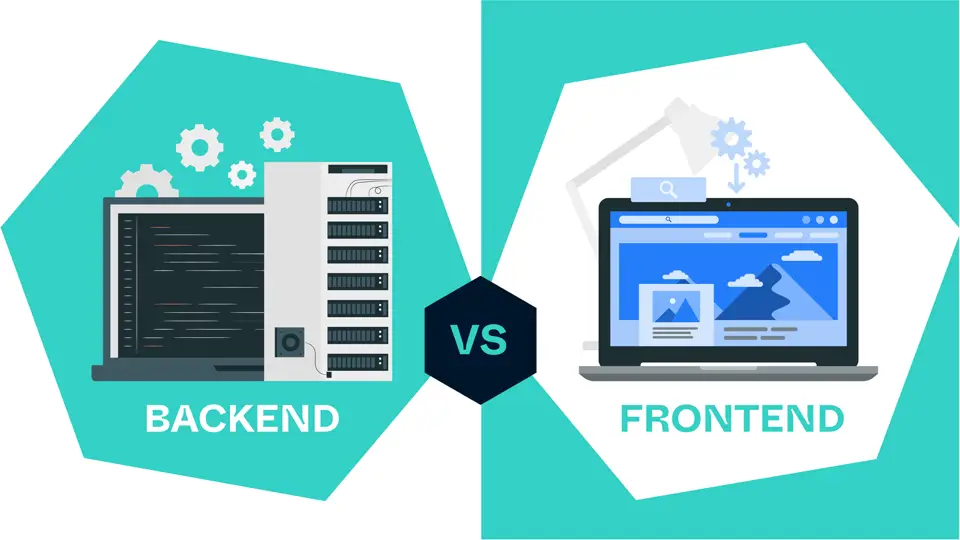100+ The opportunity to introduce the job of the Category Front-end Developer
Công ty TNHH Vistarsoft Technology
Hiring High-Paying Frontend Developer Roles | Aniday
1. Who are Front-end Developers?
Front-end development places a strong emphasis on user experience, aiming to create an interface that is simple, fast, secure, and visually appealing to encourage user engagement. Front-end developers craft the components of an application that users directly interact with, using code and design methodologies.
Interactive features such as custom maps, pop-up forms, sliders, and navigational menus play a crucial role in front-end development, guiding users through the application and enhancing their experience. Front-end developers are responsible for creating all visible elements on a website, from buttons and links to animations, translating design concepts into code to realize the client's vision.
Using web languages like HTML, CSS, and JavaScript, front-end developers build user-interactive websites and applications accessible to the public. They play a pivotal role in shaping the visual components of a website, ensuring a seamless and engaging user experience

2. What are the main differences between Frontend and Backend Developers?
Everything that a user can view on a website or application is referred to as the front end. To produce interactive and visual components that come together to create an aesthetically pleasant experience, front-end developers frequently collaborate directly with the customer.
Back-end developers, on the other hand, work on the portions of a website or program that are hidden from users. They work in the background to ensure that databases and servers run efficiently. The information a visitor requests from a server, application, or database written in code is the only reason front-end interaction functions.
Aniday is currently recruiting numerous Backend Developer positions that you can refer to here: https://aniday.com/en/job/category/backend-developer-4

3. What do Front-end Developers do?
A front-end developer creates interfaces that connect technology and design by enticing users to interact with backend utilities. They take website design files and convert them into HTML, JavaScript (JS), and/or CSS code - the core elements of front-end development. This includes design/layout, content, buttons, images, navigation, and internal linking.
Everything that a user sees, clicks, or uses to input or access information on a website is the responsibility of a Front-end developer. This requires both creativity and technical understanding. Their focus is on user experience and the technology they implement underpinning how well it will complete functions, speed, and smooth functionality. They also ensure there are no bugs or errors on the front end and design renders as intended across different platforms and browsers.
This frequently entails a few of the following regular duties:
- Communicate with customers: The front-end developer needs to be aware of the client's goals for the project before they can begin working on anything. To avoid wasting time on the first draft, it is imperative to practice paying close attention as they listen and ask the proper questions.
- Design the website's visual appearance: When working on more complex projects, Front-end engineers collaborate with a digital designer who handles the site's graphic design. Other times, the developer is in charge of selecting the forms, buttons, color schemes, fonts, layout, alignment, and photo placement, among other elements that contribute to a website's overall style.
- Examine issues: Front-end developers need to be prepared to test websites and fix flaws that prevent elements from functioning as intended. Verifying the functionality of personalization tools or content management systems may be part of the testing procedure
4. Which skills are important for a Front-end Developer?
Front-end developers employ a range of technical skills in their daily work. Here are some common ones:
- Coding: Writing instructions for computers using programming languages like HTML, CSS, JavaScript, and PHP
- Experience developing with VUE.js: filtering, custom form inputs, Vuex, mixins, Nuxt SSR with a deep understanding of Vue's internal architecture (Virtual DOM, component lifecycle, render lifecycle)
- Experience designing and interacting with RESTful APIs and authentication API schemas
- Expert-level knowledge of Git
- Coding frameworks: Utilizing frameworks to streamline webpage development by incorporating pre-defined functions.
- Code testing and debugging: Identifying and fixing bugs in code to enhance webpage performance and functionality.
- Network connection: Understanding network services for successful web development.
- Cross-browser development: Ensuring webpages function consistently across different browsers.
- Responsive design: Creating webpages that adapt to various devices for optimal user experience.
- A clear understanding of React.js and its core principles
- Experience with common React workflows (such as Next, Flux, or Redux)
- Familiarity with newer ECMAScript language features
- Experience with data structure libraries (e.g. Next.js)
- Knowledge of modern authentication mechanisms, such as JSON Web Tokens
- Experience with popular front-end development tools like Babel, Webpack, NPM, etc.
- Ability to understand business requirements and translate them into technical requirements
In addition to technical skills, soft skills are essential for professional development:
- Problem-solving: Assessing social conditions and solving problems through technology.
- Communication: Collaborating with team members and conveying complex information effectively.
- Creativity: Designing original user interfaces and finding innovative solutions.
- Organization: Managing multiple projects and staying organized with tasks.
- Customer service: Interacting with clients, understanding their needs, and meeting project expectations.
- Attention to detail: Ensuring accuracy in coding and adhering to client specifications.


















